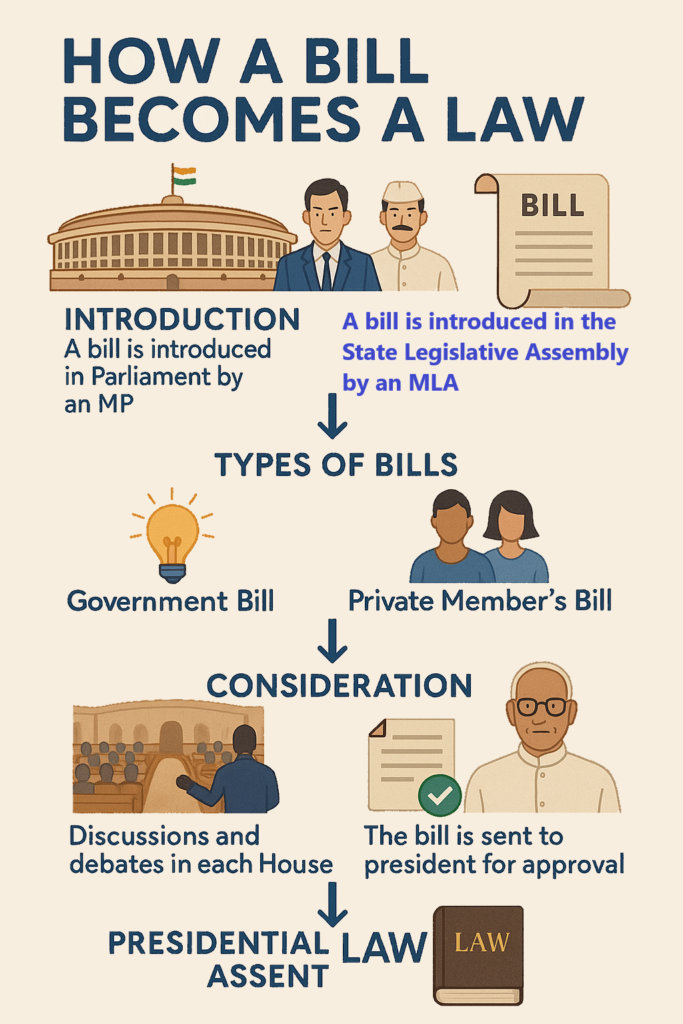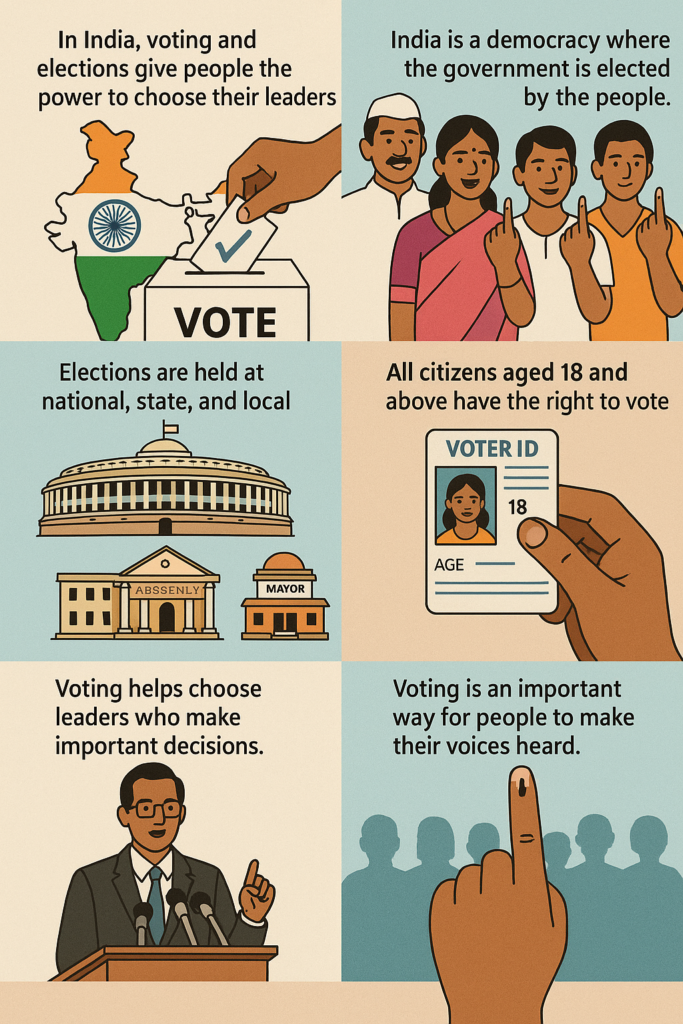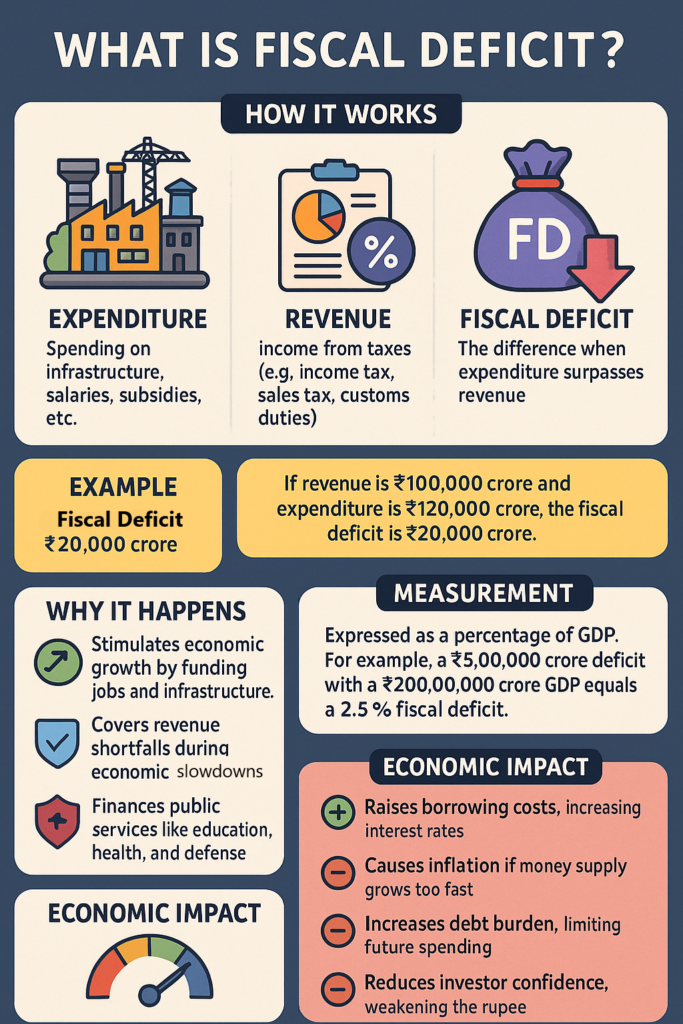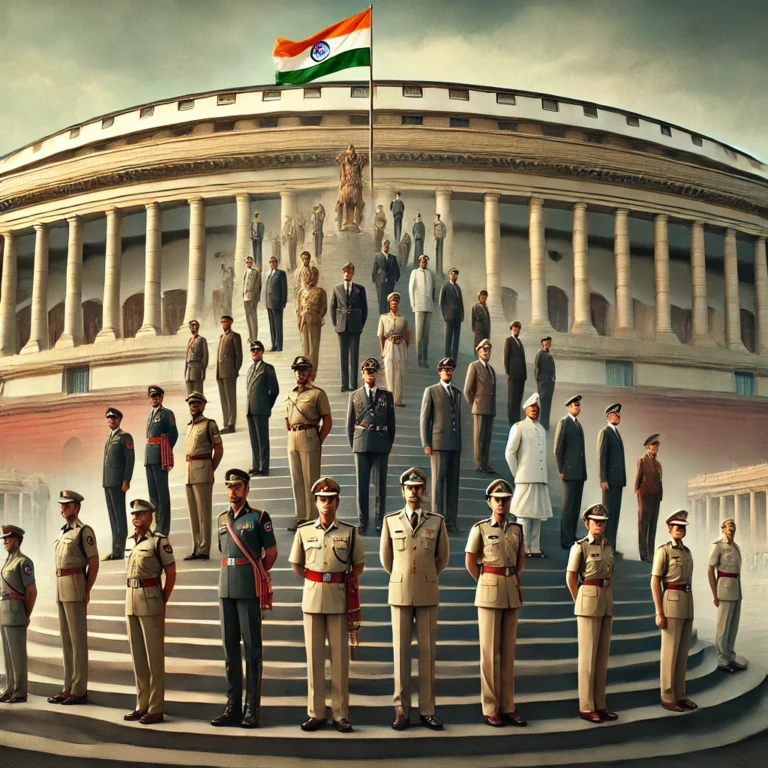India has a democratic system, meaning the people of the country elect their representatives to make decisions on their behalf. The Indian electoral system involves different levels of government and representatives. There are three main bodies involved in this system:
- Lok Sabha (Lower House)
- Rajya Sabha (Upper House)
- The President of India

1. Lok Sabha (Lower House of Parliament)
What is Lok Sabha?
The Lok Sabha is the elected house of the Indian Parliament, where members are directly chosen by the people through elections. It’s like the “people’s house” because the members (called MPs – Members of Parliament) represent the citizens’ interests.
How Does Lok Sabha Work?
- Members (MPs): The Lok Sabha has 545 seats. 543 members are elected directly by the people from different constituencies (areas) across India, and 2 members are nominated by the President to represent the Anglo-Indian community.
- Election Process: Lok Sabha elections are held every 5 years. India is divided into 543 constituencies, and each constituency elects one MP. These elections are conducted using the First-Past-The-Post system, where the candidate with the most votes wins.
- Role: The Lok Sabha is responsible for passing laws, debating national issues, and approving the national budget. The government is formed by the party or coalition with the majority of seats in the Lok Sabha.
How are MPs Chosen?
- Political Parties: Political parties contest elections, and the candidate with the most votes in each constituency wins.
- Majority Government: The party (or coalition) that gets the majority of seats forms the government. The leader of this party becomes the Prime Minister.
Key Facts:
- The Lok Sabha is the more powerful of the two houses because it represents the people directly.
- The Lok Sabha makes decisions on national laws, budgets, and key policies.
2. Rajya Sabha (Upper House of Parliament)
What is Rajya Sabha?
The Rajya Sabha is the upper house of the Indian Parliament. It represents the states and union territories of India, unlike the Lok Sabha, which represents the people directly.
How Does Rajya Sabha Work?
- Members: The Rajya Sabha has 245 members. These members are not directly elected by the people but are elected by the members of the State Legislative Assemblies and elected members of the Legislative Council, or nominated by the President.
- Nominated Members: Some members are appointed by the President of India for their expertise in fields like literature, science, arts, etc.
- Term: Members of the Rajya Sabha are elected for 6 years, but one-third of the members retire every two years. This means the Rajya Sabha is a continuously functioning body.
Role of Rajya Sabha:
- The Rajya Sabha’s role is mainly to review and suggest changes to bills passed by the Lok Sabha. It ensures that laws are carefully examined before becoming final.
- It cannot reject a bill outright but can suggest changes or ask the Lok Sabha to reconsider.
Key Facts:
- Rajya Sabha represents states and ensures that smaller states or regions have a voice in national decisions.
- It is a permanent body, unlike the Lok Sabha, which is dissolved every five years.
3. The President of India
What is the President’s Role?
The President is the head of state and the supreme commander of India’s armed forces. However, the President’s powers are mostly ceremonial, and real power lies with the Prime Minister and the Cabinet. Still, the President plays an important role in the Indian political system.
How is the President Elected?
- The President is elected indirectly by an electoral college, which includes elected members of both Lok Sabha and Rajya Sabha, and elected members of State Legislative Assemblies.
- The President’s term is 5 years, and the President can serve more than one term if re-elected.
What Does the President Do?
- Summoning the Parliament: The President can call the first session of Parliament after an election and address both the Lok Sabha and Rajya Sabha.
- Approving Bills: All laws passed by Parliament must be approved by the President to become official.
- Appointments: The President appoints the Prime Minister, the Council of Ministers, and other key officials, including judges of the Supreme Court.
- Pardons: The President has the power to grant pardons and reduce punishments, especially in cases involving certain crimes.
Key Facts:
- The President is the ceremonial leader but has important powers in special cases like national emergencies or dissolution of the Lok Sabha.
- The President’s role is more symbolic, and the government is run by the Prime Minister and Cabinet.
How Do They All Work Together?
- Lok Sabha and Rajya Sabha work together to make laws. Lok Sabha usually takes the lead, and Rajya Sabha reviews the bills.
- The President signs bills into law but doesn’t usually interfere in day-to-day decisions of the government.
Summary of Key Roles:
| Body | Role |
|---|---|
| Lok Sabha | Directly elected by the people, passes laws, and decides on the budget. |
| Rajya Sabha | Represents states, reviews and revises laws, and provides expertise. |
| President | Ceremonial head of state, signs bills into law, and appoints key officials. |
In Summary:
- The Lok Sabha is where the people’s representatives meet to make laws and decisions on national issues.
- The Rajya Sabha represents the states and reviews the laws created by the Lok Sabha.
- The President plays a ceremonial role but holds important powers when needed, like approving laws and appointments.
This system ensures that India’s democracy works smoothly by having checks and balances, where different bodies work together to make decisions and govern the country.











